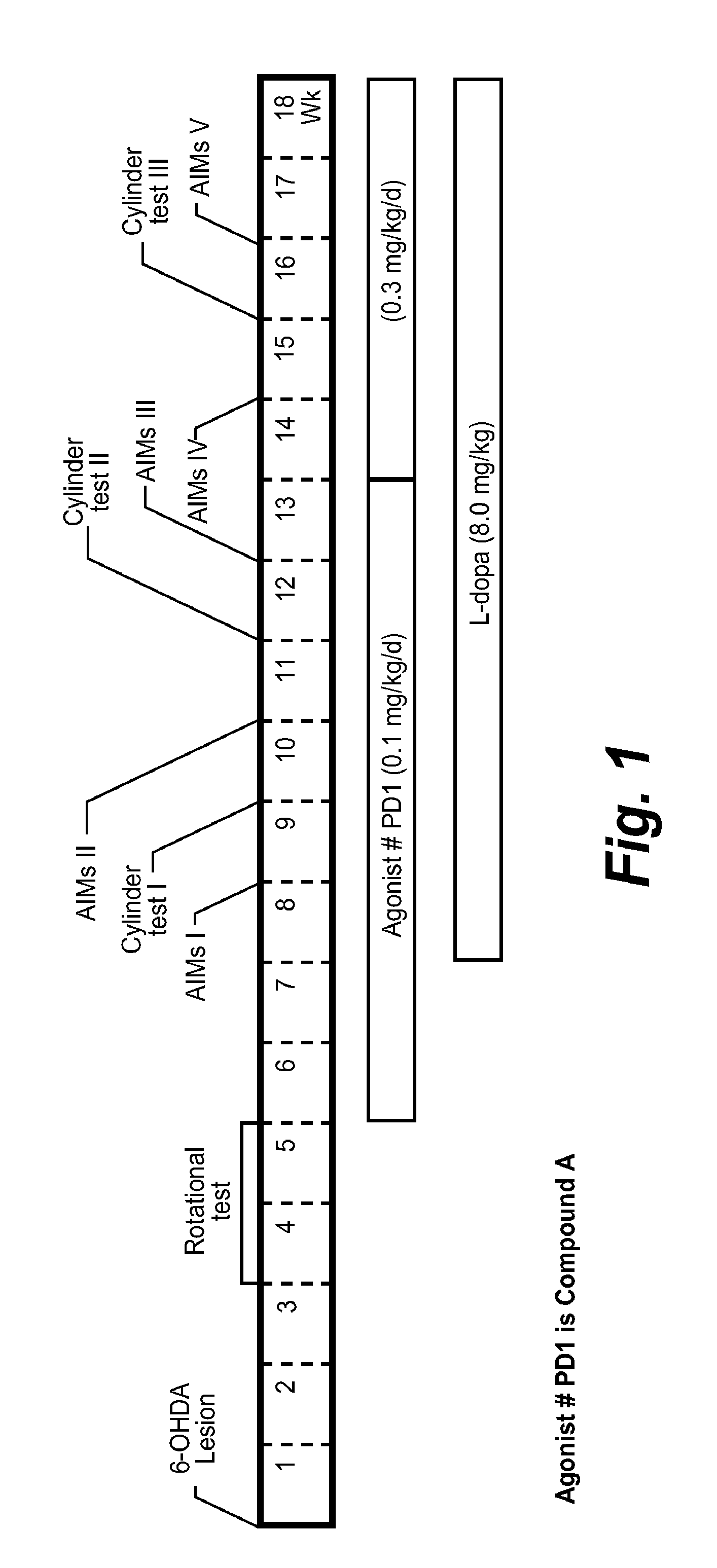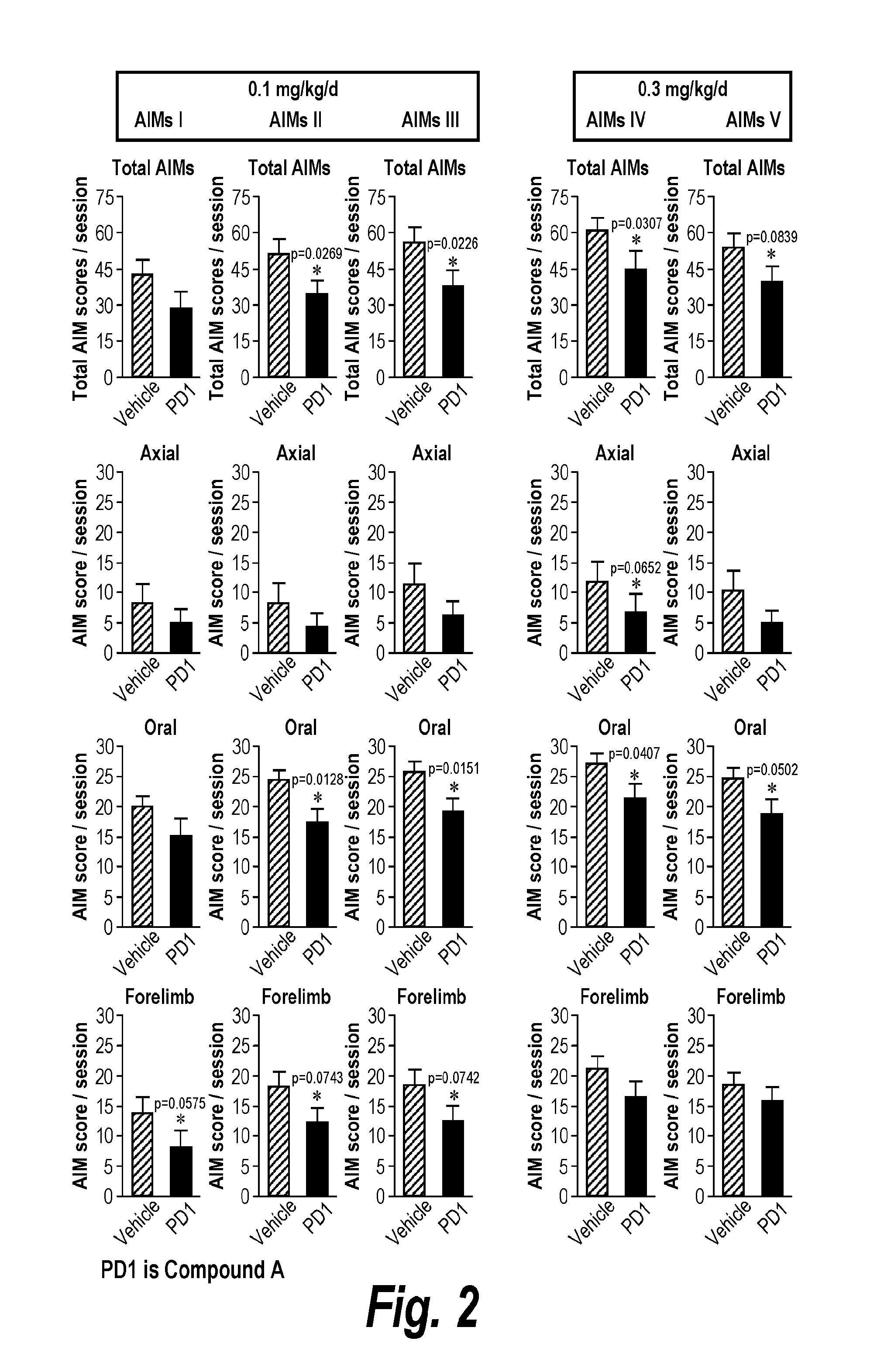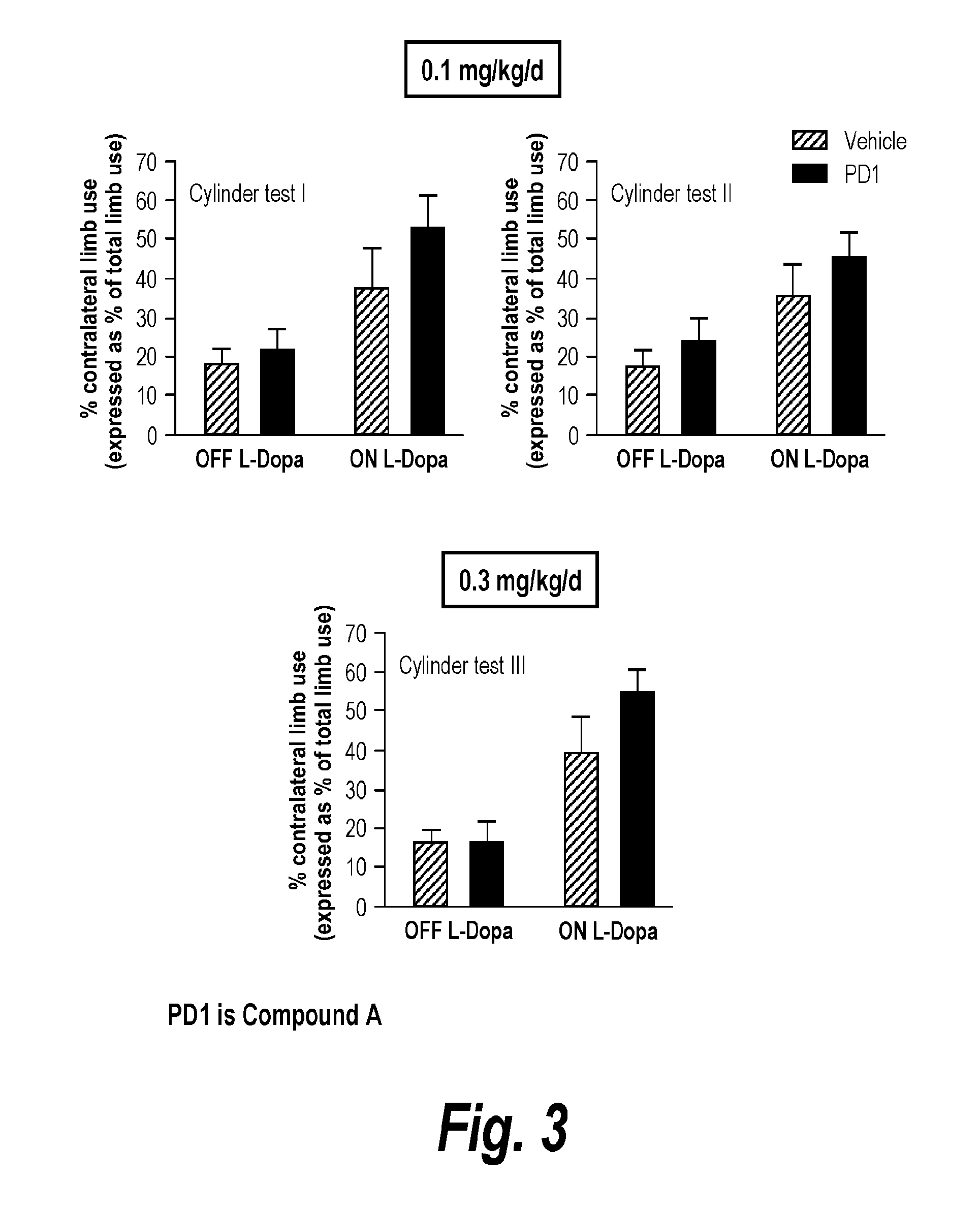Reversal of l-dopa-induced dyskinesia by neuronal nicotinic receptor ligands
a neuronal nicotinic receptor and dyskinesia technology, applied in the direction of biocide, organic chemistry, drug composition, etc., can solve the problems of limited l-dopa-induced treatment options and side effects, and achieve the effects of reducing l-dopa-induced dyskinesia or abnormality, reducing side effects, and reducing side effects
- Summary
- Abstract
- Description
- Claims
- Application Information
AI Technical Summary
Benefits of technology
Problems solved by technology
Method used
Image
Examples
example 1
[0054]
Synthesis of tert-butyl (R)-3-(methylsulfonyloxy)pyrrolidine-1-carboxylate (2)
[0055]Procedure A: To a solution of tert-butyl (R)-3-hydroxypyrrolidine-1-carboxylate (200 g, 1.07 mol) and triethylamine (167 g, 1.63 mol) in toluene (700 mL) at −20 to −30° C. was added methanesulfonyl chloride (156 g, 1.36 mol) drop-wise while maintaining the temperature at −10 to −20° C. The solution was warmed to ambient temperature and allowed to stir. The reaction solution was sampled hourly and analyzed by HPLC to establish completion of the reaction. Upon completion of the reaction, the suspension was filtered to remove the triethylamine hydrochloride. The filtrate was washed with ˜600 mL of dilute aqueous sodium bicarbonate solution. The organic layer was dried and concentrated under reduced pressure to give 2 as a viscous oil (260 g, 92%) which is used without further purification. 1H NMR (CDCl3, 400 MHz) δ 5.27 (m, 1H), 3.44-3.76 (m, 4H), 3.05 (s, 3H), 2.26 (m, 1H), 2.15 (m, 1H), 1.47 (s,...
example 2
In Vivo Methods: L-Dopa-Induced Dyskinesia
[0074]The subtype selective NNR agonist Compound A, stimulates α41β2* and to a lesser extent α6* NNRs. Toxicological studies show that there is a low incidence of peripheral side effects in rodents, dogs, and primates and a reasonable therapeutic index, consistent with its interaction primarily at α4β2* and α6* nicotinic receptors. In safety studies in rats, Compound A, which is coded as PD1 for these examples, was not associated with any significant detrimental effects using acute free base oral doses up to 30 mg / kg. There was no behavioral sensitization, and Compound A (PD1) did not increase locomotor activity in rats, suggesting low liability for abuse. Experiments were performed using male Sprague-Dawley rats that were unilaterally lesioned with 6-OHDA (Sigma Chemical Co., St. Louis, Mo.) as previously described (Cenci et al., 1998; Cenci et al., 2002). 6-OHDA was dissolved in 0.02% ascorbic acid / saline at a concentration of 3 μg / μl. Com...
example 3
[0078]Because drugs that reduce AIMs may worsen Parkinsonism, the effect of Compound A (PD1) was also tested on motor function in Parkinsonian rats (see FIG. 3) using the limb use asymmetry or cylinder test. The cylinder test was used as an index of behavioral function after unilateral nigrostriatal damage, with explorative activity analyzed as previously described. Animals were placed in a transparent cylinder (20 cm diameter×30 cm height) or in a transparent cage and evaluated over a 5 min period. A mirror was placed behind the cylinder / cage to allow the raters to view forelimb movements when the rat was turned away from the rater. Wall exploration was expressed in terms of the percentage of use of the impaired forelimb (contralateral to the lesion) compared to the total number of limb use movements. Two raters, one blinded to the treatment status of the rats, performed the ratings. Correlation analyses yielded a high inter-rater reliability (R=0.99). This test also ...
PUM
 Login to View More
Login to View More Abstract
Description
Claims
Application Information
 Login to View More
Login to View More - R&D Engineer
- R&D Manager
- IP Professional
- Industry Leading Data Capabilities
- Powerful AI technology
- Patent DNA Extraction
Browse by: Latest US Patents, China's latest patents, Technical Efficacy Thesaurus, Application Domain, Technology Topic, Popular Technical Reports.
© 2024 PatSnap. All rights reserved.Legal|Privacy policy|Modern Slavery Act Transparency Statement|Sitemap|About US| Contact US: help@patsnap.com










